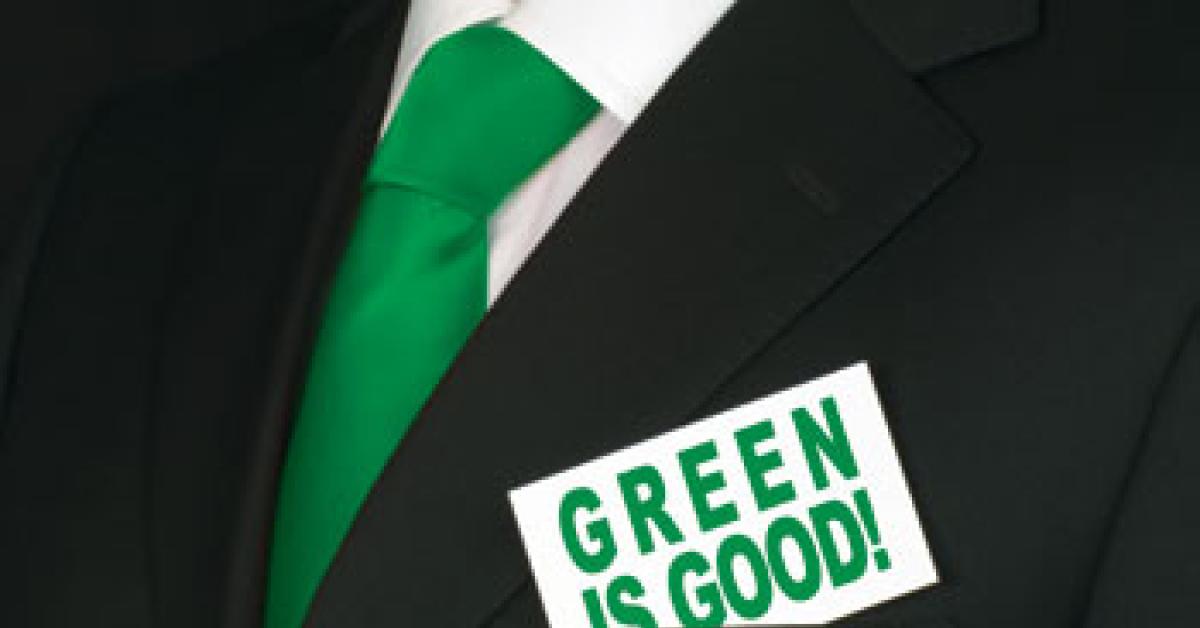CHICAGO — Not so long ago, when you looked up “green” in the dictionary, there was a brief definition about color or pigment. Today, it’s difficult to read or hear the word “green” without also thinking of the environment, of conservation, of sustainability.
When writing about greening a business operation such as a drycleaner, it’s difficult to know where to start. There are so many different ways that a cleaner could boost its environmental profile, and so many different areas that are candidates for green initiatives.
And while going green could involve a decision to invest in new equipment, chemicals or supplies, there are low-cost, common sense changes that can also make a drycleaner more enviro-friendly.
OPPORTUNITIES TO GREEN
Every part of a drycleaning operation can be engineered to be “greener.” As you examine your operation for opportunities, here are just a few things to include on your checklist:
Solvents and Chemicals — A wide variety of solvents and chemicals have been used in the drycleaning process. Of the approximately 36,000 drycleaning “shops” in the United States, approximately 85% use perchloroethylene—perc—as their primary solvent, according to the National Institute for Occupational Safety & Health.
But perc has long been in the crosshairs of environmental regulators; the U.S. Environmental Protection Agency, for example, recently approved California’s regulations banning the use of perc in drycleaning operations there by 2023.
There are alternative solvents that incorporate hydrocarbon, CO2, petroleum, glycol ether, silicon and dibutoxymethane, among others. The debate about which is “best” and why remains open, so we’ll leave it that way, but there’s no reason why a drycleaner shouldn’t at least investigate the products available to see if there is a choice that better fits their concept of being green while also supplying the cleaning power their business needs to produce quality garments.
It should be noted that dedicated machines and good waste-handling technologies have made perc and its alternatives safe to use. They present little risk to public health and the environment when used properly.
Reusable Garment Bags — Using bio- and photodegradable poly bags would make a favorable environmental impression, and drycleaners can collect poly for recycling. Likely the "greenest" and most cost-effective strategy, however, is to offer reusable bags as an alternative to the millions of pounds of single-use bags ending up in landfills each year. (The Green Garmento's Rick Siegel comments on the benefits of reusable bags and other green initiatives in his latest column, Green More Than Just a Marketing Tool.)Wetcleaning — This efficient, water-based cleaning process is an alternative to solvent-based drycleaning that requires computer-controlled washers and dryers, specialized detergents, and possibly specialized finishing equipment.
Delivery Vehicles — Route vehicles are ideal candidates to take advantage of alternative fuel and advanced vehicle technologies, idle-reduction strategies, and fuel economy measures because they are typically centrally fueled and have high fuel use and predictable routes, according to the U.S. Department of Energy.
Even if drycleaners don’t want to explore using hybrid or alternative-fuel vehicles, they can expect model year 2014-2018 delivery vehicles to have lower fuel consumption and greenhouse gas emissions. The Obama administration recently announced new rules requiring the makers of heavy-duty pickup trucks and vans, and vocational vehicles that include delivery trucks, to reduce fuel consumption and greenhouse gas emissions by 10-15%, depending on category.
Energy Reduction/Conservation — An on-site energy audit can reveal areas where your operation is using more energy than is necessary. Turn off lights when they’re not in use, or install timers or motion detectors. Optimize the power settings on your equipment. Insulate pipes.
If you’re looking more for long-term benefits, it may make sense for you to replace your boiler with a newer model rated for better energy efficiency. Systems for recapturing and reusing laundry and wetcleaning rinse water and recovering exhaust heat are also available.
Lighting — Now is the time to replace your T12 fluorescent lamps, because they will soon no longer meet efficiency standards that go into effect next July, says the National Lighting Bureau. The most commonly used 4-foot, 8-foot and 2-foot, U-shaped T12 fluorescent lamps will begin disappearing from distributors’ and retailers’ shelves in less than a year.
“The ballasts these systems need to function are no longer being manufactured in or imported to the United States,” says NLB Chair Howard P. Lewis. “Those who own conventional T12 systems will need to modernize them or replace them altogether.
“Making the change sooner rather than later can result in considerable cost savings, because some of the existing financial incentives will likely be reduced or withdrawn once keeping T12 in place is no longer a reasonable option.”
Will investing your time and money in greening your operation be worth it? Research shows that consumer interest in green services is growing.
Ian Murphy contributed to this story.
Tomorrow: Consumers want “green” drycleaning…
Have a question or comment? E-mail our editor Dave Davis at [email protected].

